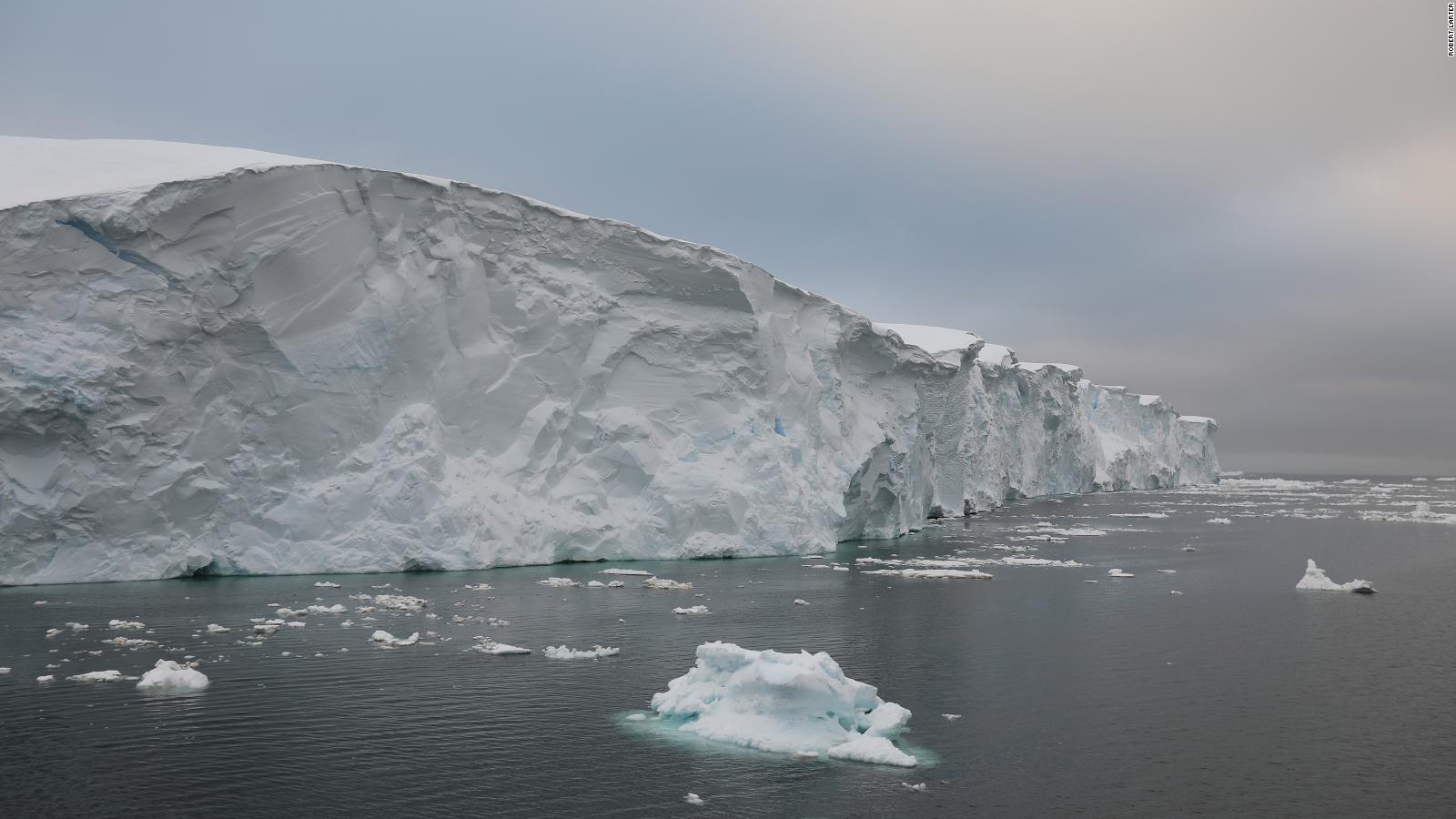2 Antarctic glaciers begin to disintegrate 0:43
(CNN) --
Antarctica's so-called "doomsday glacier," dubbed for its high risk of collapse and threat to global sea levels, has the potential to recede rapidly in the coming years, scientists say. , amplifying concerns about the extreme rise in sea level that would accompany their potential demise.
The Thwaites Glacier, capable of raising sea levels by several metres, is eroding along its underwater base as the planet warms.
In a study published Monday in the academic journal
Nature Geoscience
, scientists mapped the glacier's historical retreat, hoping they can learn from its past to predict what the glacier is likely to do in the future.
The edge of floating ice on the margin of Thwaites Glacier in 2019.
Scientists found that at some point in the last two centuries, the base of the glacier broke away from the seabed and retreated at a rate of 2.1 kilometers per year.
That's double the speed scientists have observed in the last decade.
This rapid disintegration possibly occurred "as recently as the mid-20th century," Alastair Graham, lead author of the study and a marine geophysicist at the University of South Florida, said in a news release.
This suggests that Thwaites Glacier has the potential for rapid retreat in the near future, once it retreats past a seafloor ridge that is helping to keep it at bay.
"Thwaites is holding up miraculously today, and we should expect to see big changes on small timescales in the future even from year to year, once the glacier recedes beyond a shallow ridge in its bed," he said. the statement Robert Larter, a marine geophysicist and one of the study's co-authors from the British Antarctic Survey.
advertising
Rán, a Kongsberg HUGIN autonomous underwater vehicle, near Thwaites Glacier after a 20-hour seafloor mapping mission.
The US Antarctic Program research vessel Nathaniel B. Palmer at work near the Eastern Thwaites Ice Shelf in 2019.
Thwaites Glacier, located in West Antarctica, is one of the widest on Earth and is larger than the state of Florida.
But it's only a fraction of the West Antarctic Ice Sheet, which contains enough ice to raise sea levels up to 15 feet, according to NASA.
As the climate crisis has accelerated, this region has been closely watched for its rapid melting and capacity for widespread coastal destruction.
Thwaites Glacier itself has worried scientists for decades.
As early as 1973, researchers wondered if he was at high risk of collapse.
Nearly a decade later, they found that since the glacier is anchored to the seabed, rather than on dry land, warm ocean currents could melt the glacier from below, causing it to destabilize.
A work boat recovering the Rán autonomous vehicle in one of the fjords of the Antarctic Peninsula during the expedition to the Thwaites Glacier in 2019.
In the 21st century, researchers began documenting Thwaites' rapid retreat in an alarming series of studies.
In 2001, satellite data showed that the land line was receding by about 1 kilometer per year.
In 2020, scientists found evidence that hot water was flowing through the base of the glacier, melting it from below.
And then in 2021, a study showed that the Thwaites Ice Shelf, which helps stabilize the glacier and prevents ice from flowing freely into the ocean, could break off in five years.
"From the satellite data, we recorded these large fractures that extend across the surface of the ice shelf, essentially weakening the ice fabric -- kind of like a crack in the windshield," said Peter Davis, an oceanographer. from the British Antarctic Survey, to CNN in 2021. "It's slowly spreading across the ice shelf and eventually it's going to fracture into many different pieces."
Monday's findings, which suggest Thwaites is capable of receding at a much faster rate than recently thought, were documented on a 20-hour mission in extreme conditions that mapped an underwater area the size of Houston, according to a press release.
Graham said this investigation "was truly a once-in-a-lifetime mission," but that the team hopes to return soon to collect samples from the seafloor so they can determine when earlier rapid retreats occurred.
This could help scientists predict future changes in the "Doomsday Glacier," which scientists had previously assumed would have slow changes, something Graham said this study refutes.
"A small hit to Thwaites could produce a big response," Graham said.
AntarcticaGlobal WarmingGlacier










